Roman Architecture Final
1/47
There's no tags or description
Looks like no tags are added yet.
Name | Mastery | Learn | Test | Matching | Spaced |
|---|
No study sessions yet.
48 Terms
Castel Sant'Angelo
Early Renaissance, 15th Century, Pope Nicholas V.
Originally the Mausoleum of Hadrian, repurposed by the Vatican for their own purposes.
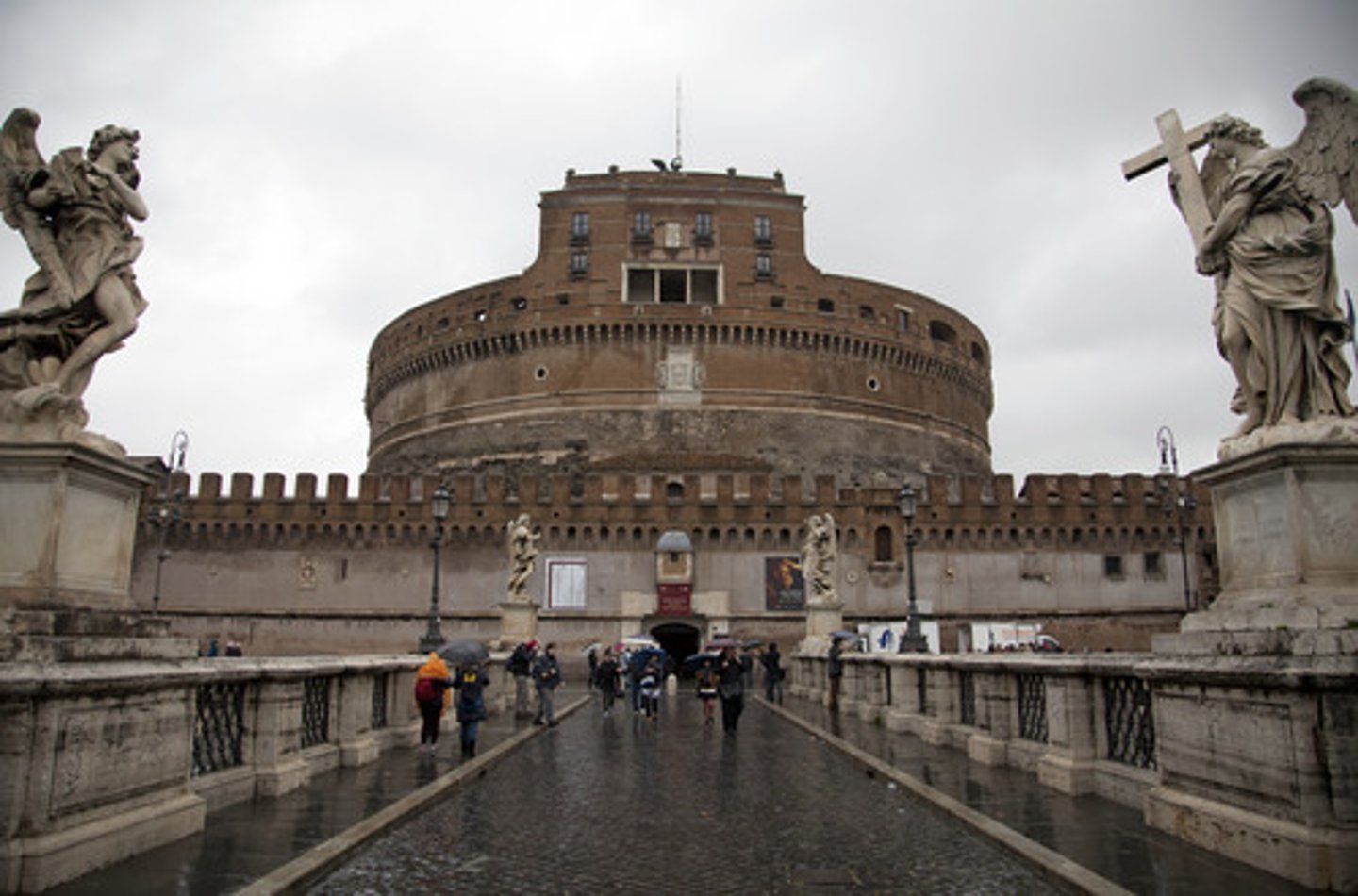
The Tempietto at San Pietro in Montorio
Gianicolo Hill, High Renaissance, 1500, Donato Bramante
Commissioned by Cardinal Bernardino de Carvajal for King Ferdinand and Queen Isabella of Spain. A small temple with traditional roman elements like a dome and radial columns.
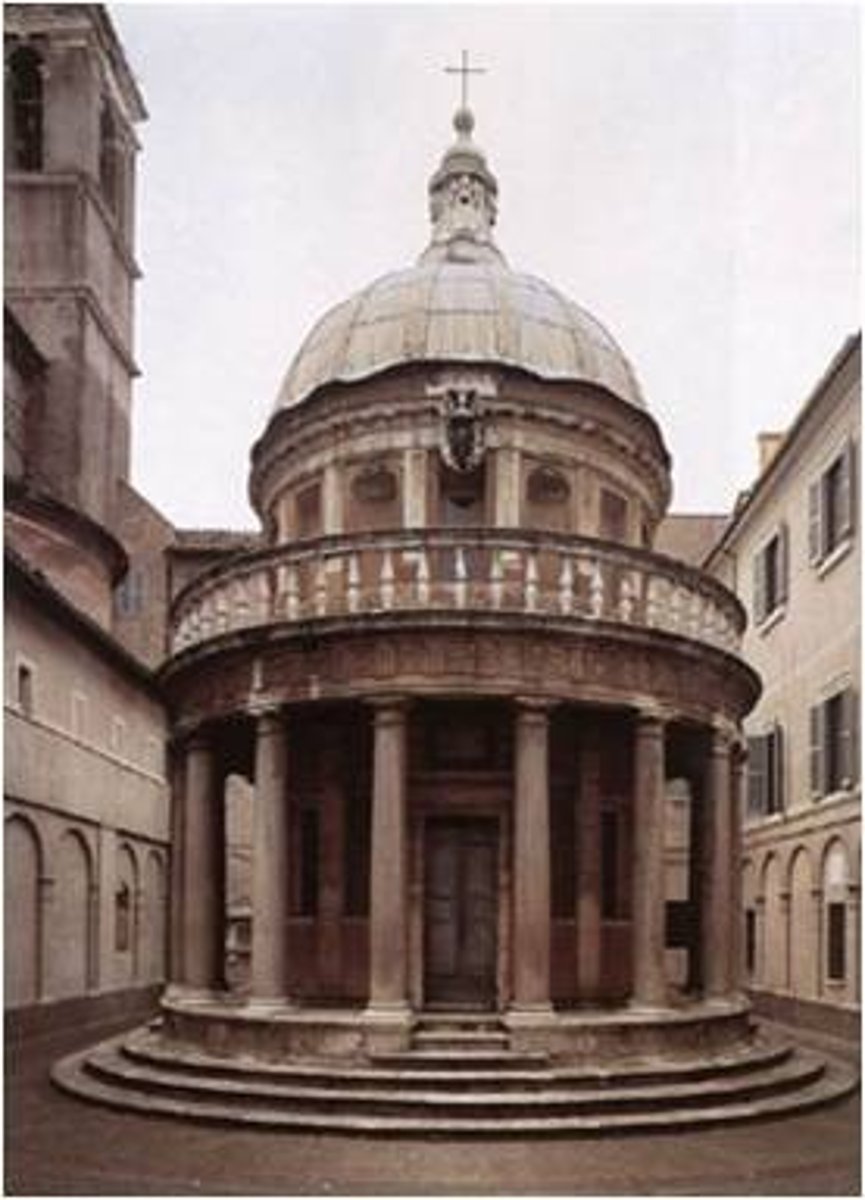
Cortile del Belvedere
Vatican, Early Renaissance, 1505, Bramante
Commissioned by Pope Julius II, was designed as a series of tiered courtyards north of St. Peter's Basilica.

St. Peter's Basilica, Bramante
Vatican, High Renaissance, 1506
Commissioned by Pope Julius II. First major reconstruction of St. Peter's Basilica. He won the design and created a centralized plan of spheres and cubes more akin to Byzantine than anything Latin. A simple square cross.

St. Peter's Basilica, Michelangelo
Vatican, High Renaissance, 1546
Commissioned by Pope Pius IV. He expands, simplifies, and clarifies Bramante's scheme making the core and encircling squared area more apparent. Designed the dome, crossing and exterior excluding the nave and facade.
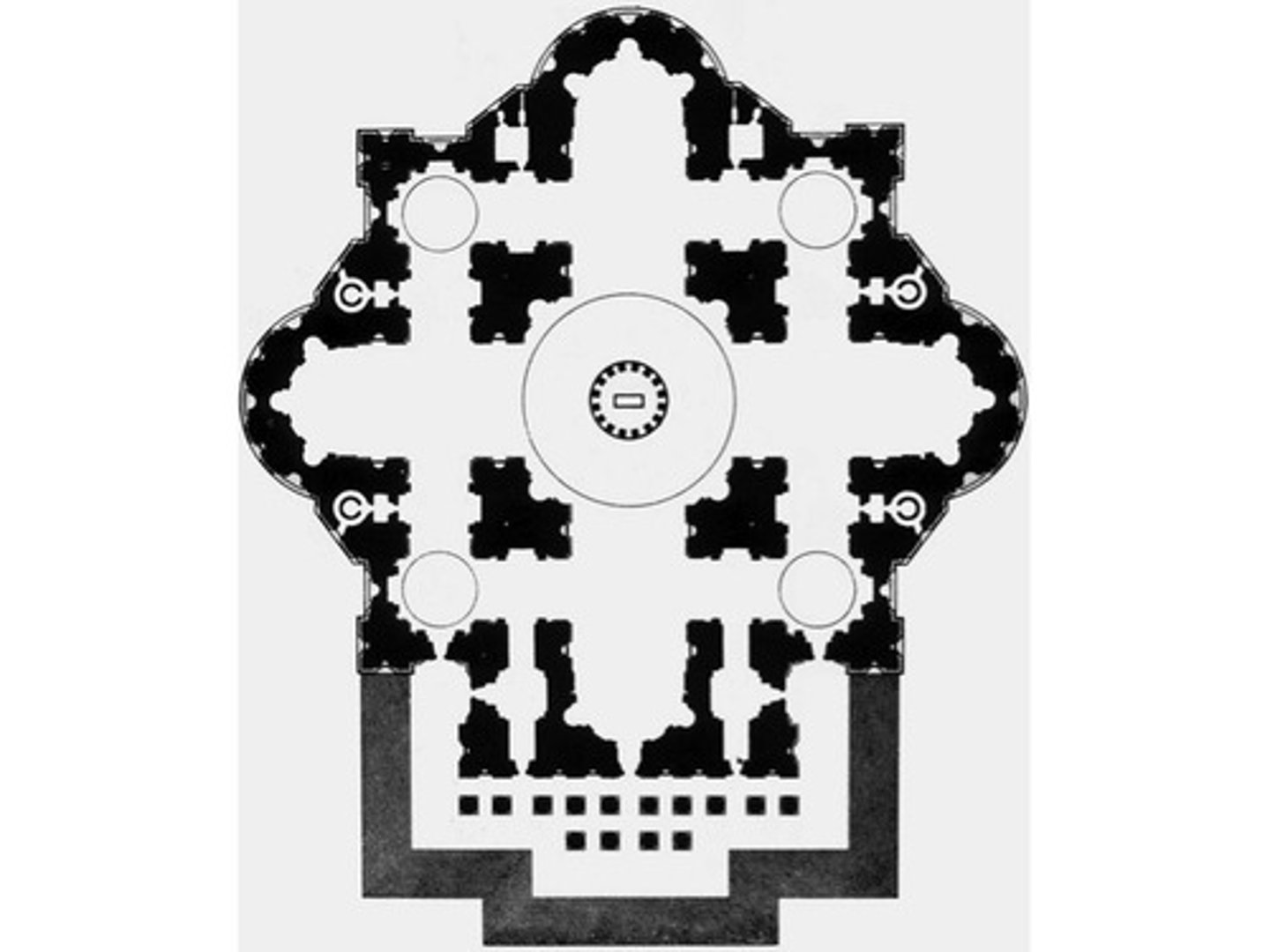
St. Peter's Basilica, Carlo Maderno
Vatican, Baroque, 1607-14
Commissioned by Pope Paul V. Extended nave and facade to flatten and give the main entrance a grander appearance.
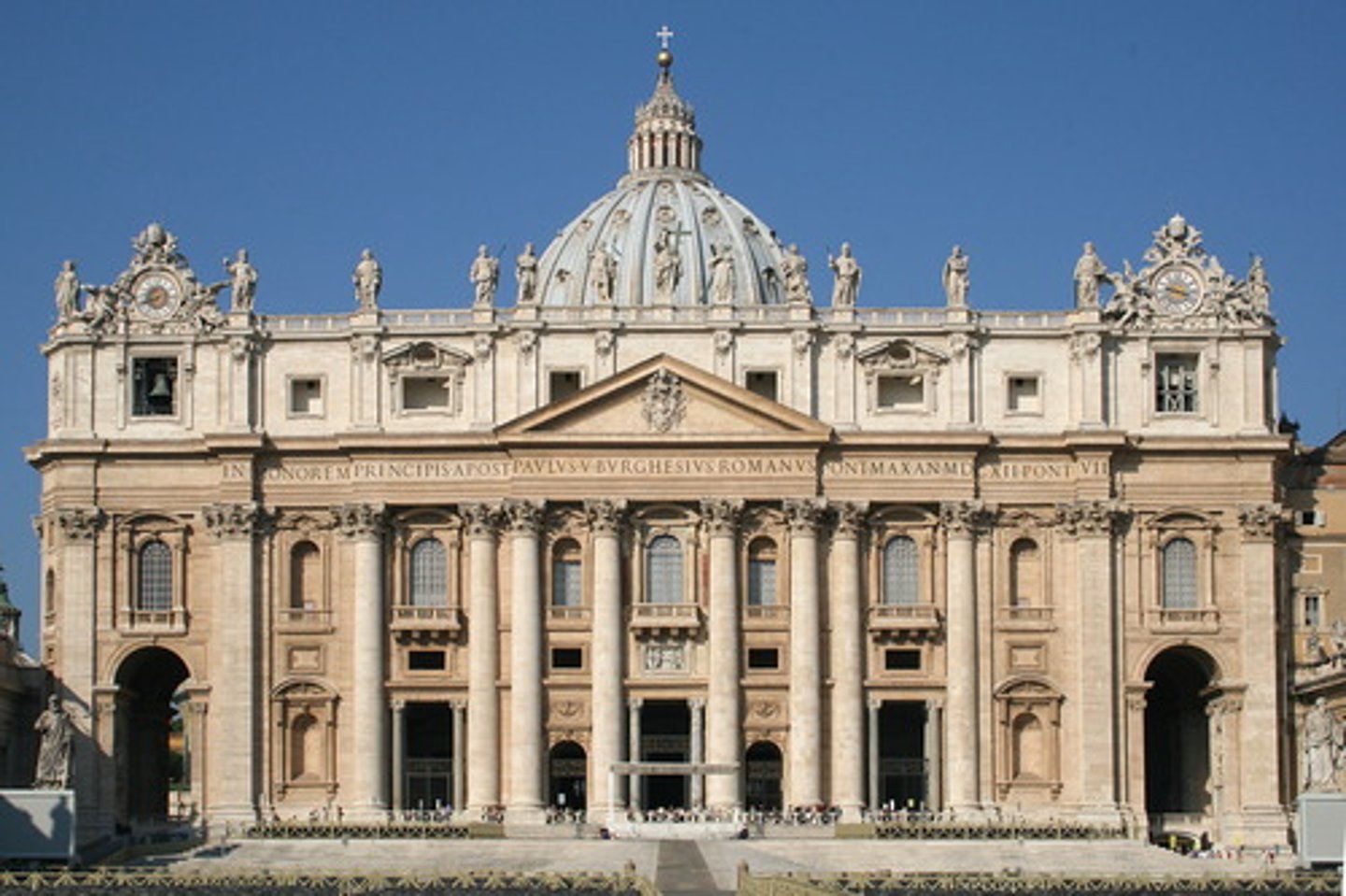
St. Peter's Basilica, Gian Lorenzo Bernini
Vatican, Baroque, 1656
Commissioned by Pope Sixtus V. Added the piazza at the exterior and the obelisk at the center. Heavy ancient Roman influence.
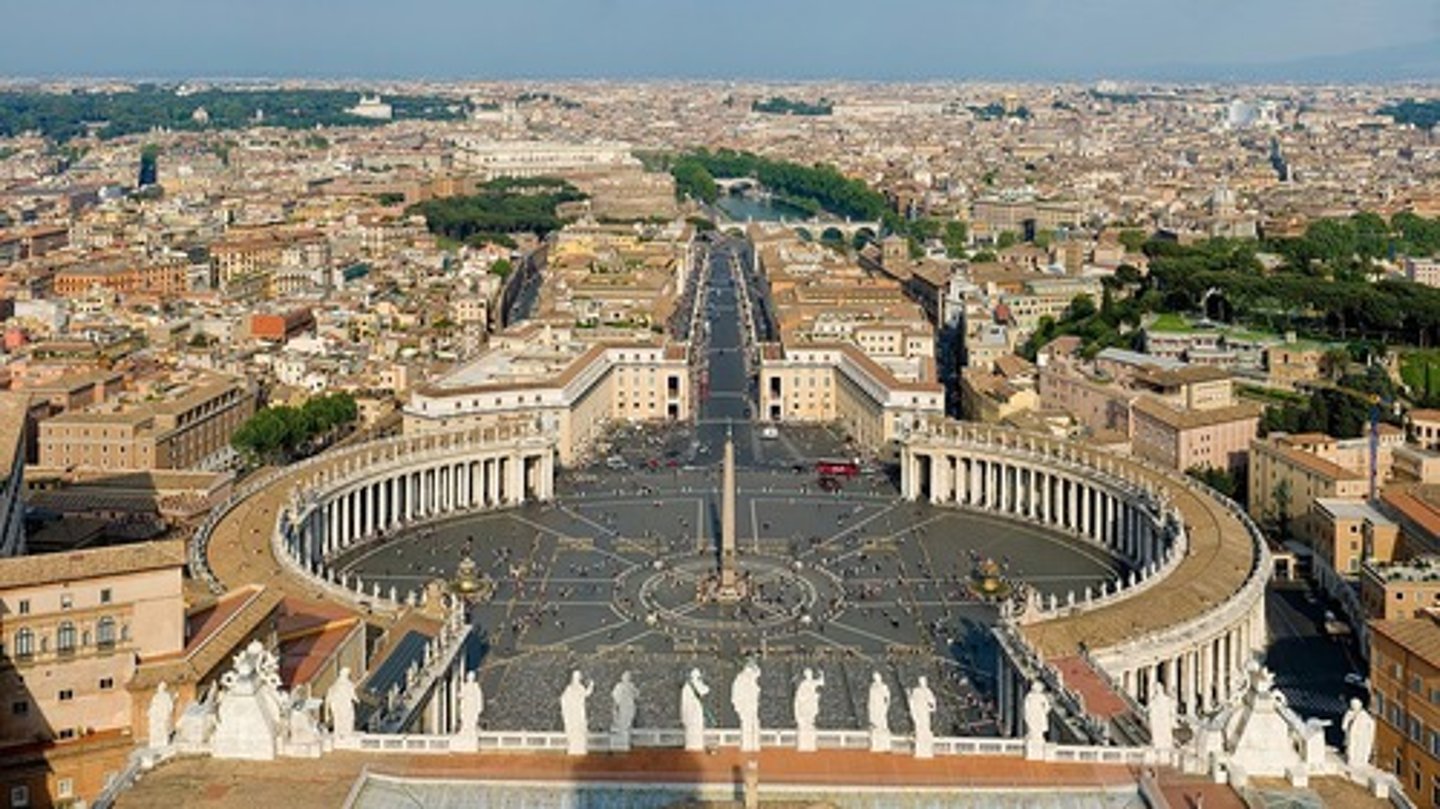
The Campidoglio
Capitoline Hill, High Renaissance, 1537-46, Michelangelo
Commissioned by Pope Paul III. Former plaza of the center of Roman government. Largely abandoned before. The Palazzo dei Senatori/Roman Tabularium and the Palazzo dei Conservatori were associated with Roman power and were kept. Palazzo Capitalino was added, as well as a radial plaza design and staircase.
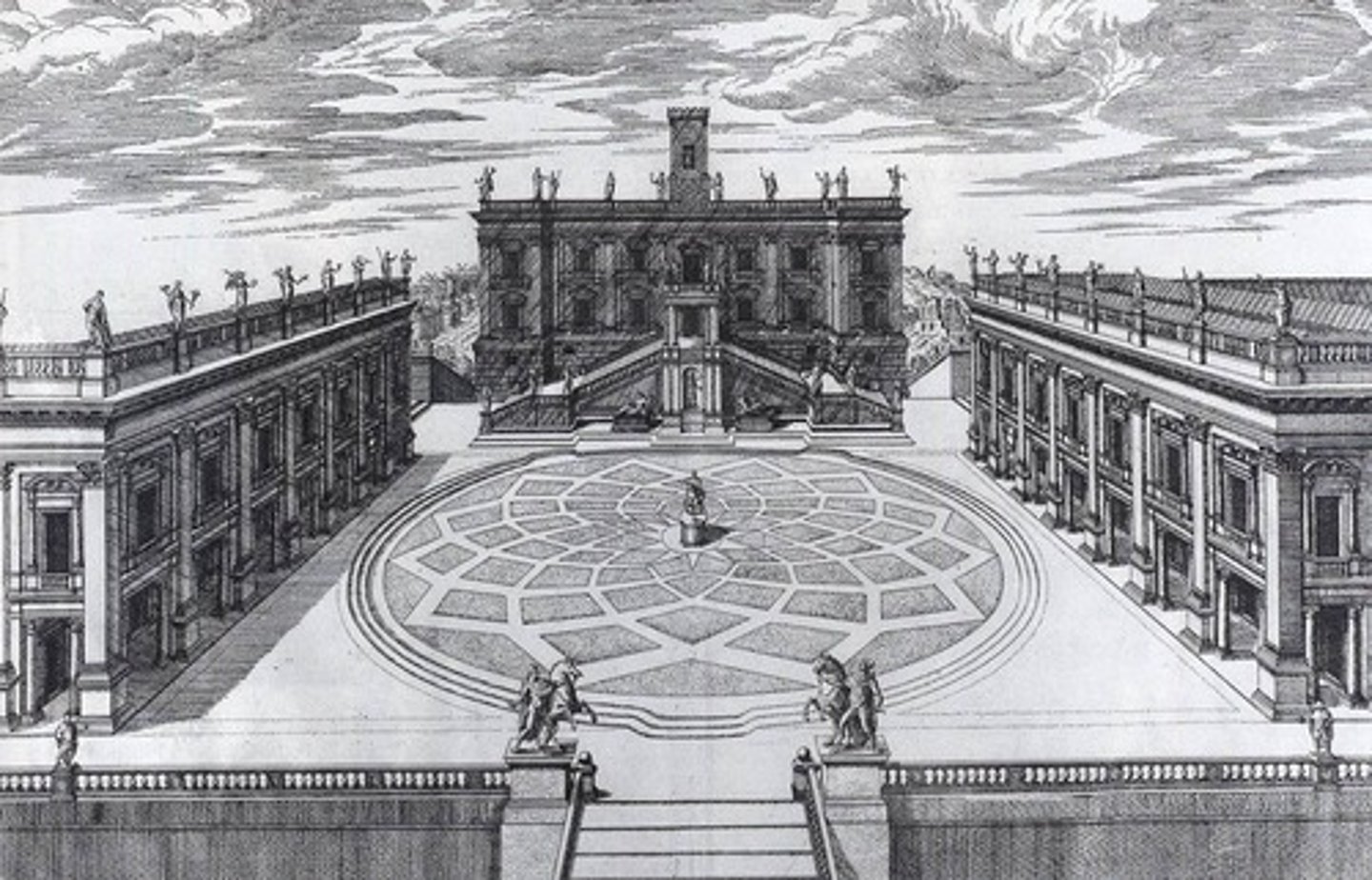
New Street Network
Baroque, 1585-90, Pope Sixtus V.
New street and urban planning layout that traveled from the north of the city to the east. Traveled over the Quirinal Hill. Traveled from the Piazza del Popolo to Santa Maria Maggiore and beyond.
Palazzo Baberini
Baroque, 1628, Carlo Maderno and Gianlorenzo Bernini and Francesco Borromini
Home, office, and palace for the Barberini family, who were closely tied to the papacy. Different wings of the house were for different major branches of the family. Borromini did the heliocoidal staircase. Bernini did the stair court.

"Forced Perspective" Gallery, Palazzo Spada
Baroque, 1632, Francesco Borromini
A visual illusion of a garden at the end of a hallway, significantly smaller than it looks. Clever use of lines and angles.
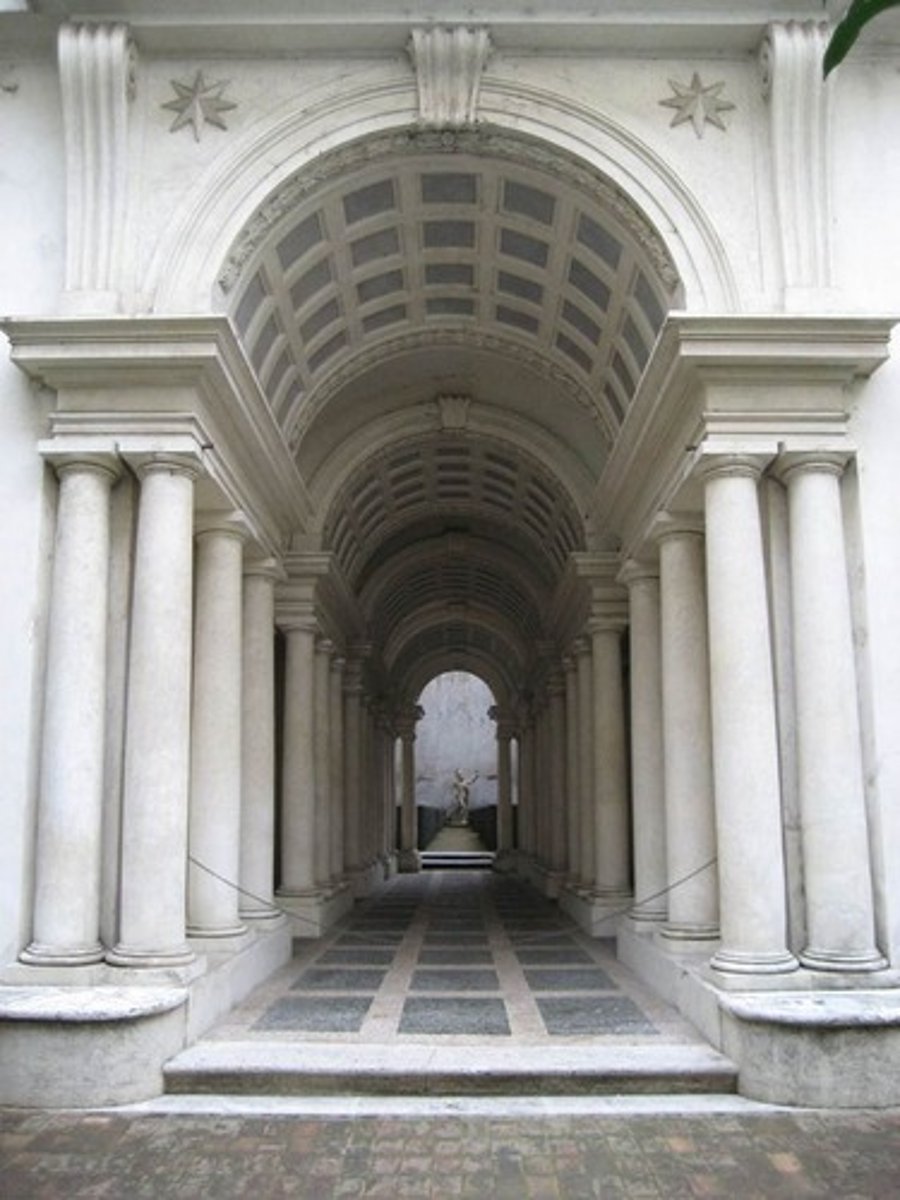
San Carlo alle Quattro Fontane
Baroque, 1634-41, Upper facade done 1665-67, Francesco Borromini
Commissioned by Cardinal Francesco Barberini. Small and narrow site that shared a corner with one of the 4 Fountains. Interior was largely undecorated for the time due to poorer organization.
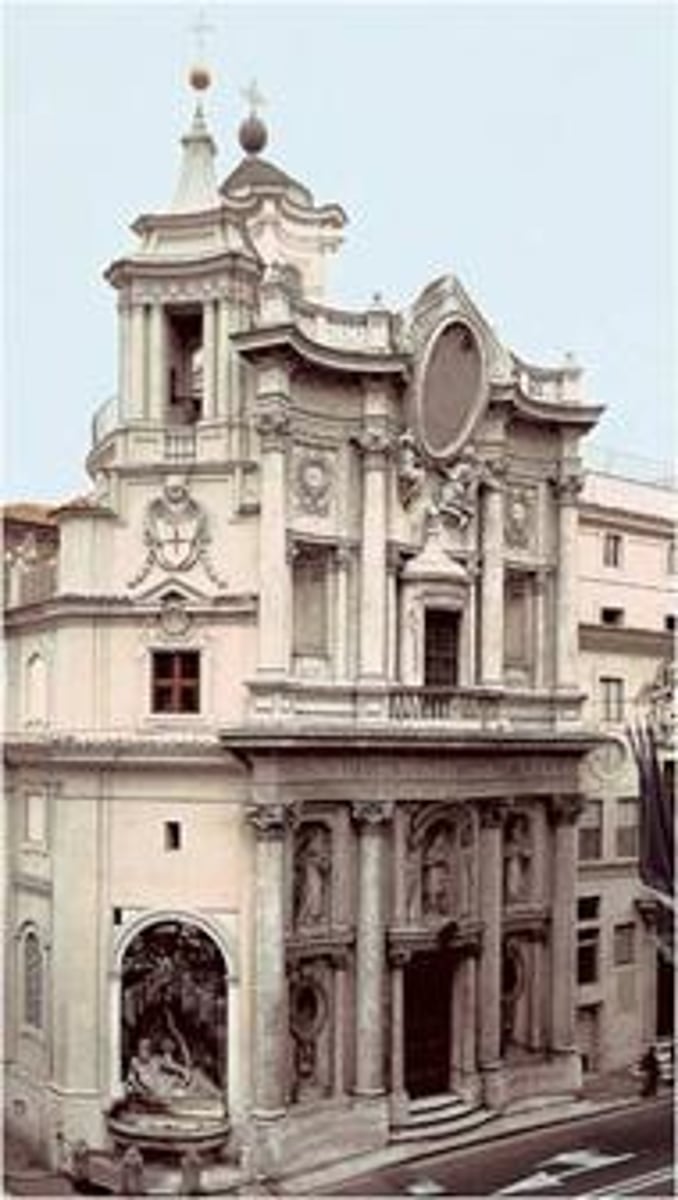
The New Plan of Rome/La Nuova Pianta di Roma (The Noli Map)
Neoclassical, 1748, Giambattista Noli
Identification of open spaces in Rome for the new neoclassical movement and image of the city. Plan is best used to identify the urban image of the city as a whole, what is specifically visible, etc.

The Spanish Steps/Scalinata della Trinita dei Monti
Neoclassical/Baroque, 1723-28, Francesco de Sanctis
Name comes from the former embassy next to it. A staircase connection between two plazas at different heights. 3 different stair types, each with room for monuments and statues.
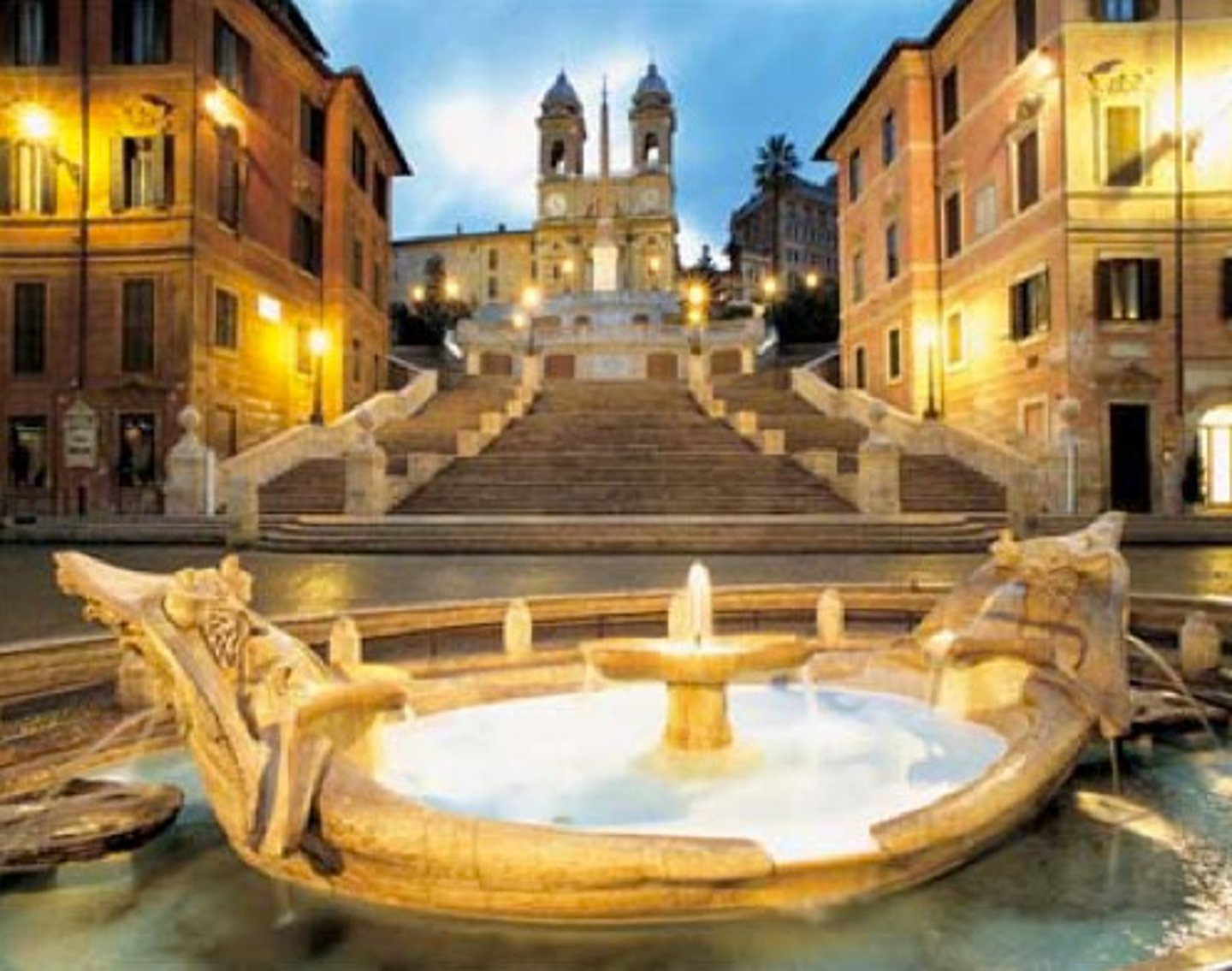
*Vittorio Emanuele II Monument (Il Vittoriano, "the Altar of the Fatherland")
Risorgimento, 1885-1911, Giuseppe Sacconi
Built on the site of the Piazza Venezia, which was relatively dense for a plaza. Area was razed and only the Palazzo Venezia remained, though it was disassembled and moved slightly. Covered in references to Italian and Roman history, frames Vittorio Emanuele as a new Roman emperor on horseback.
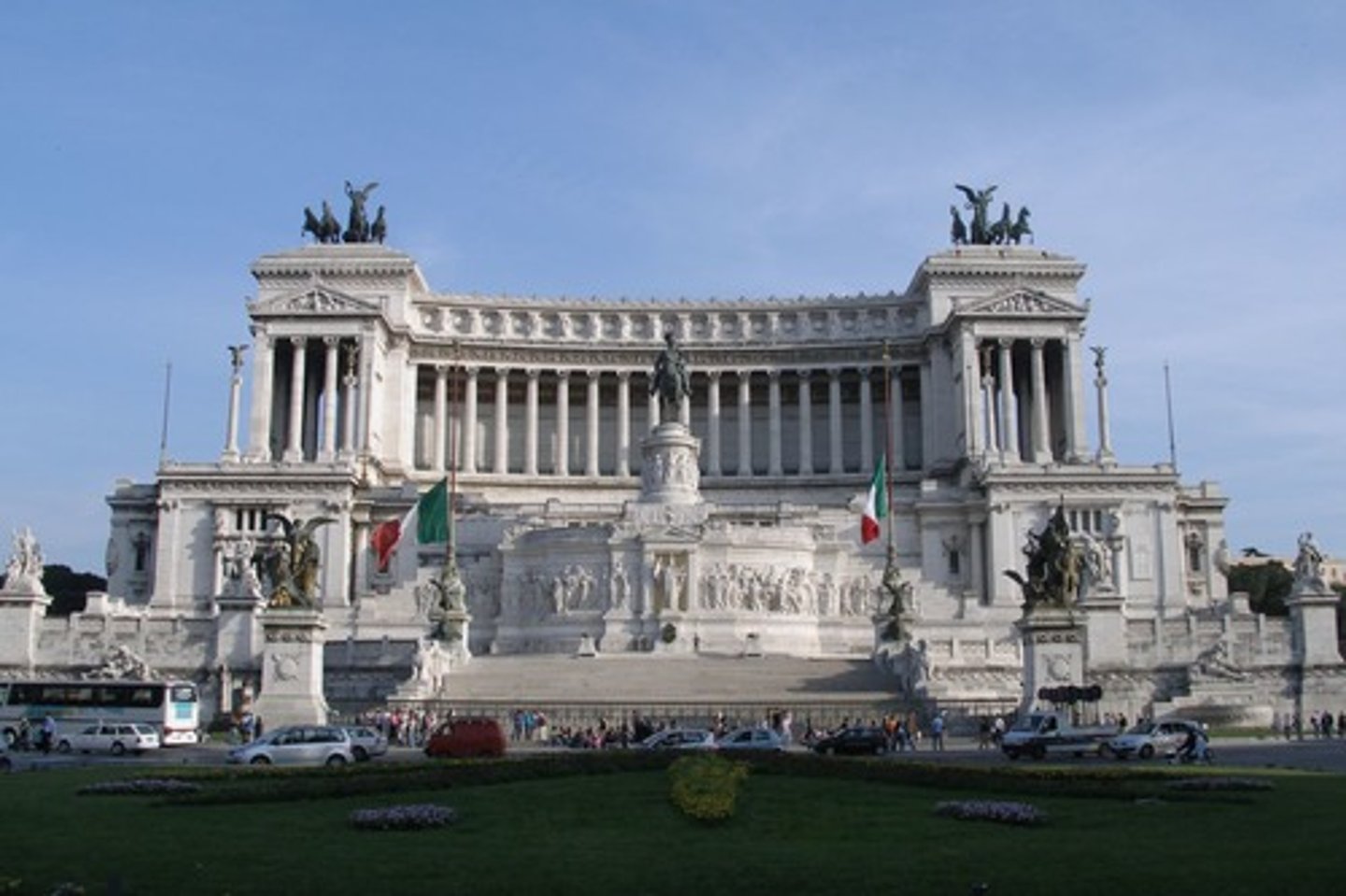
Via dell'Impero (now via dei Fori Imperiale)
Fascist, 1924-32
Commissioned by Benito Mussolini to create a large road to connect the Colosseum to the Piazza Venezia, with adjacency to other important ancient Roman monuments. Became the center of numerous "Mussolini is emperor" processionals.
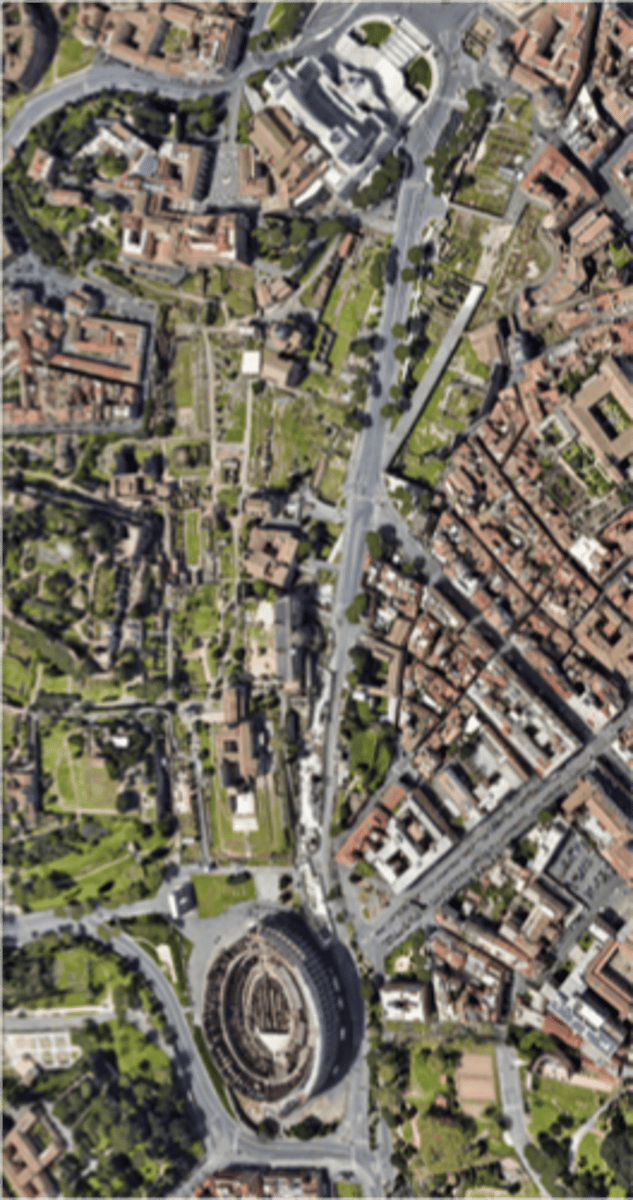
Piazza Augusto Imperatore
Fascist, 1924-32, Vittorio Ballio-Morpurgo
Removal of Vatican elements and restoration of Roman elements. Rehoused the Ara Pacis (temple altar) to next door from a different location.
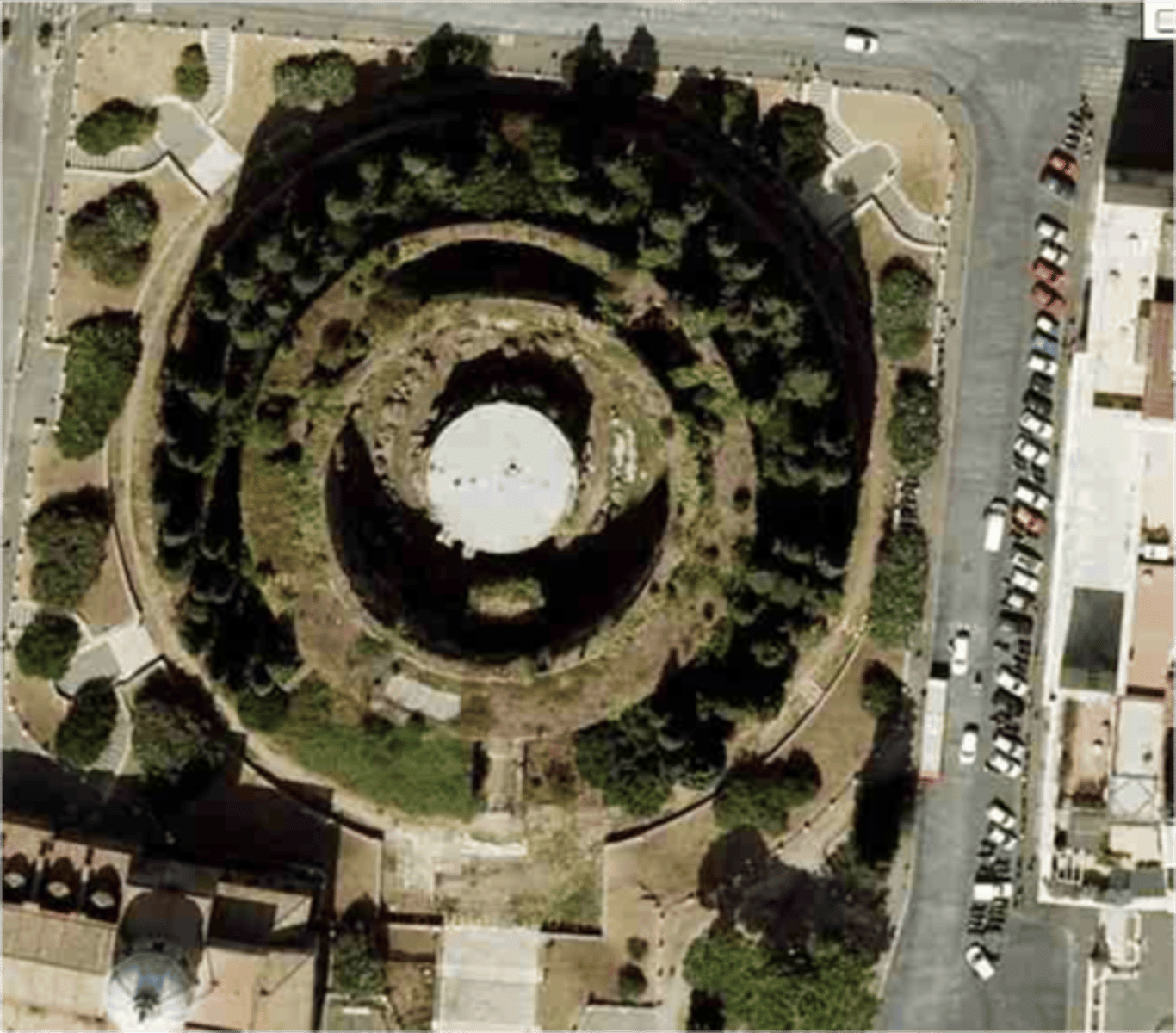
EUR (Exposizione Universale Roma) or E42
Fascist, 1936/8-1942, then 1950s and 60s, Marcello Piacentini
World's Fair Exposition in Rome to demonstrate the superior Roman and Italian culture, as well as the strength of the Fascist party. Cancelled due to WWII and left largely abandoned.
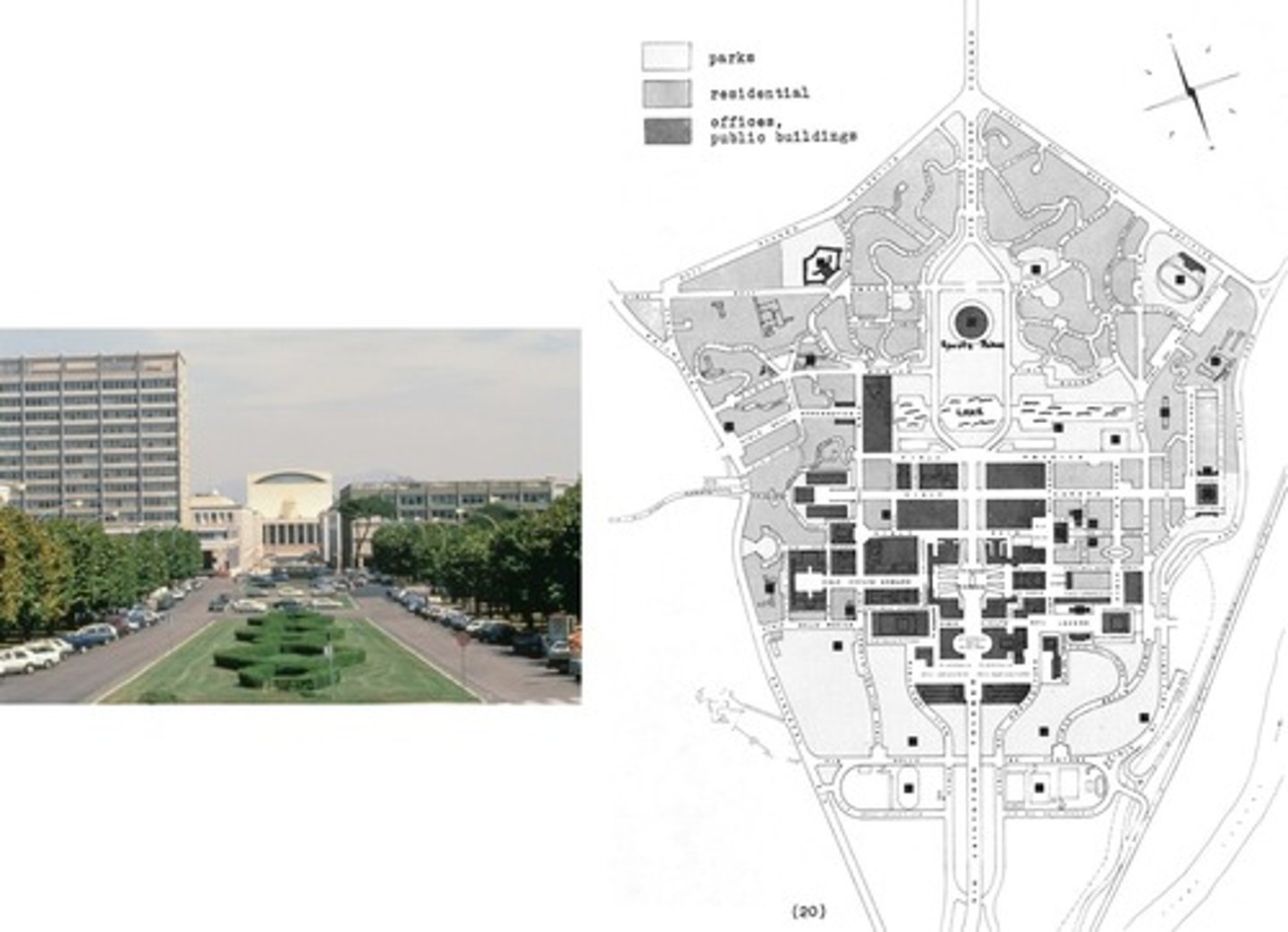
Palazzo della Civiltà del Lavoro
EUR, Fascist, 1937-40, Giovanni Guerrini, Ernesto La Padula, Mario Romano
Palace of Italian Civilization and a museum of culture. A modern take on traditional Roman designs. Abandoned, but now used by Fendi.
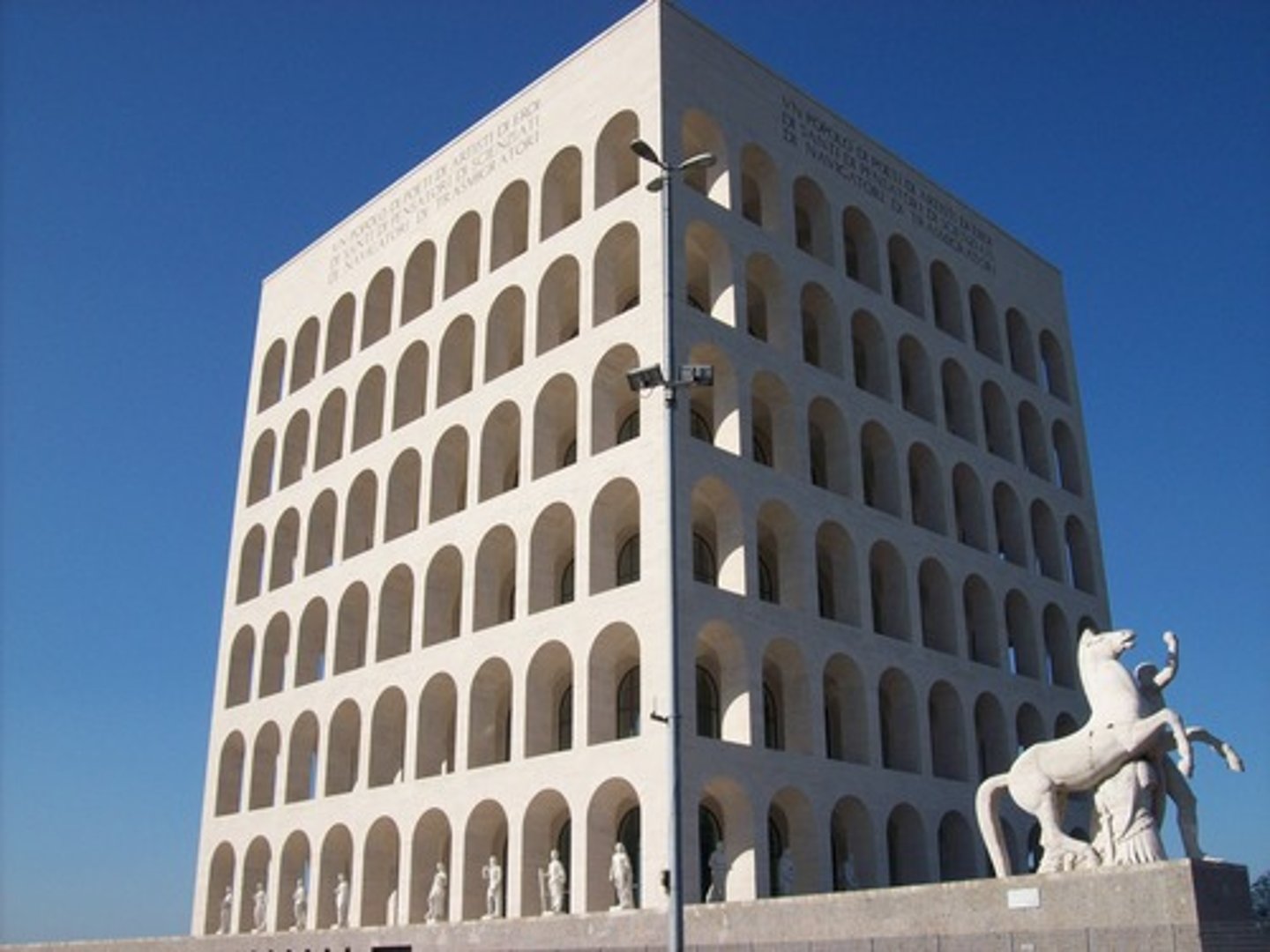
Palazetto dello Sport
Post-war modernism, 1956-58, Pier Luigi Nervi
Built for the 1960 Olympics as a demonstration of Italy's modernization after the war. First Olympics to be televised, so Italian concrete modernist design became an international icon.
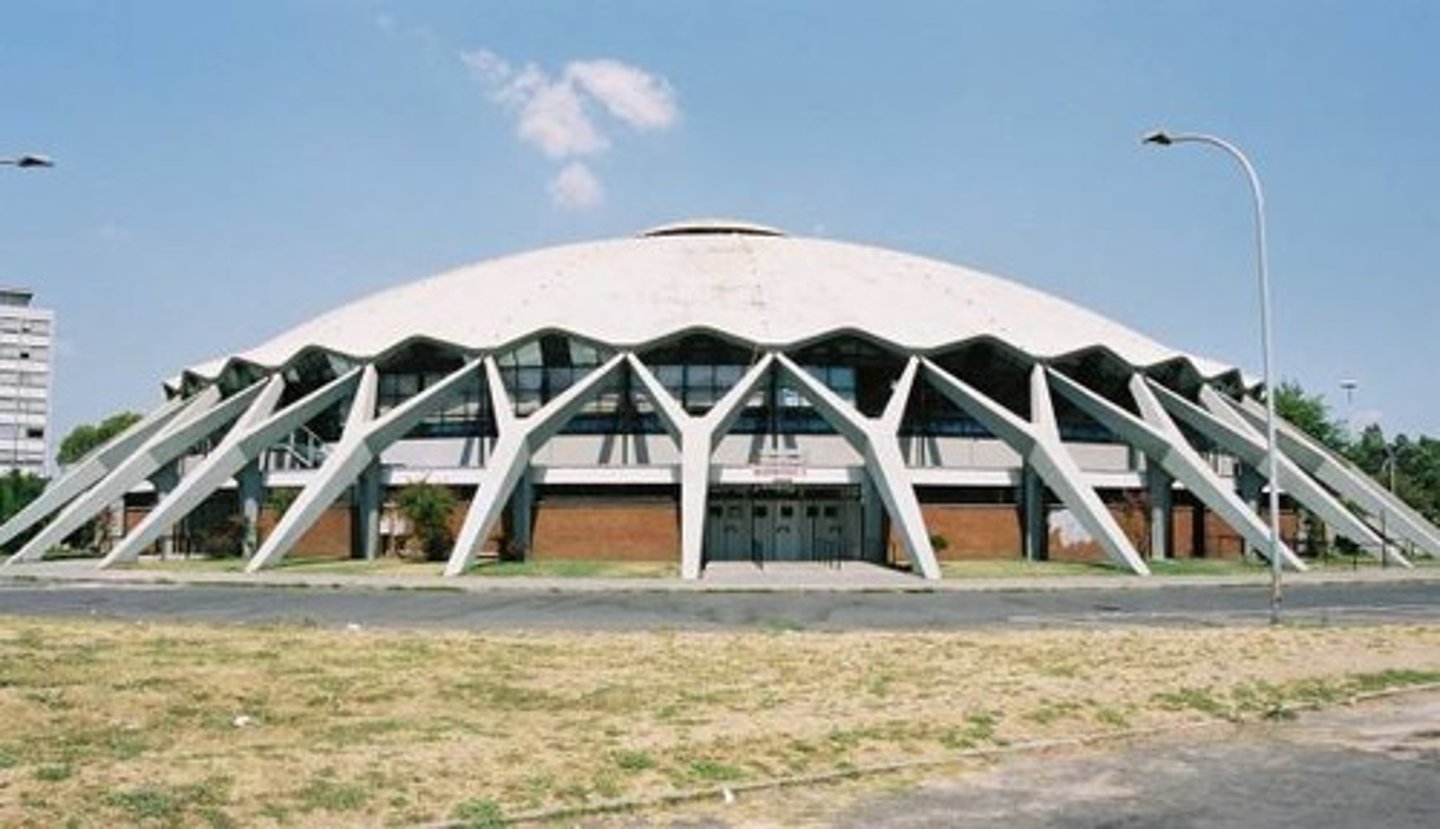
Ara Pacis Museum
Contemporary, 1999-2006, Richard Meier
Rebuilding and expansion of a failing fascist design for the museum. Only major contemporary project in Rome at the time and was criticized for having an American architect creating a "gas station."
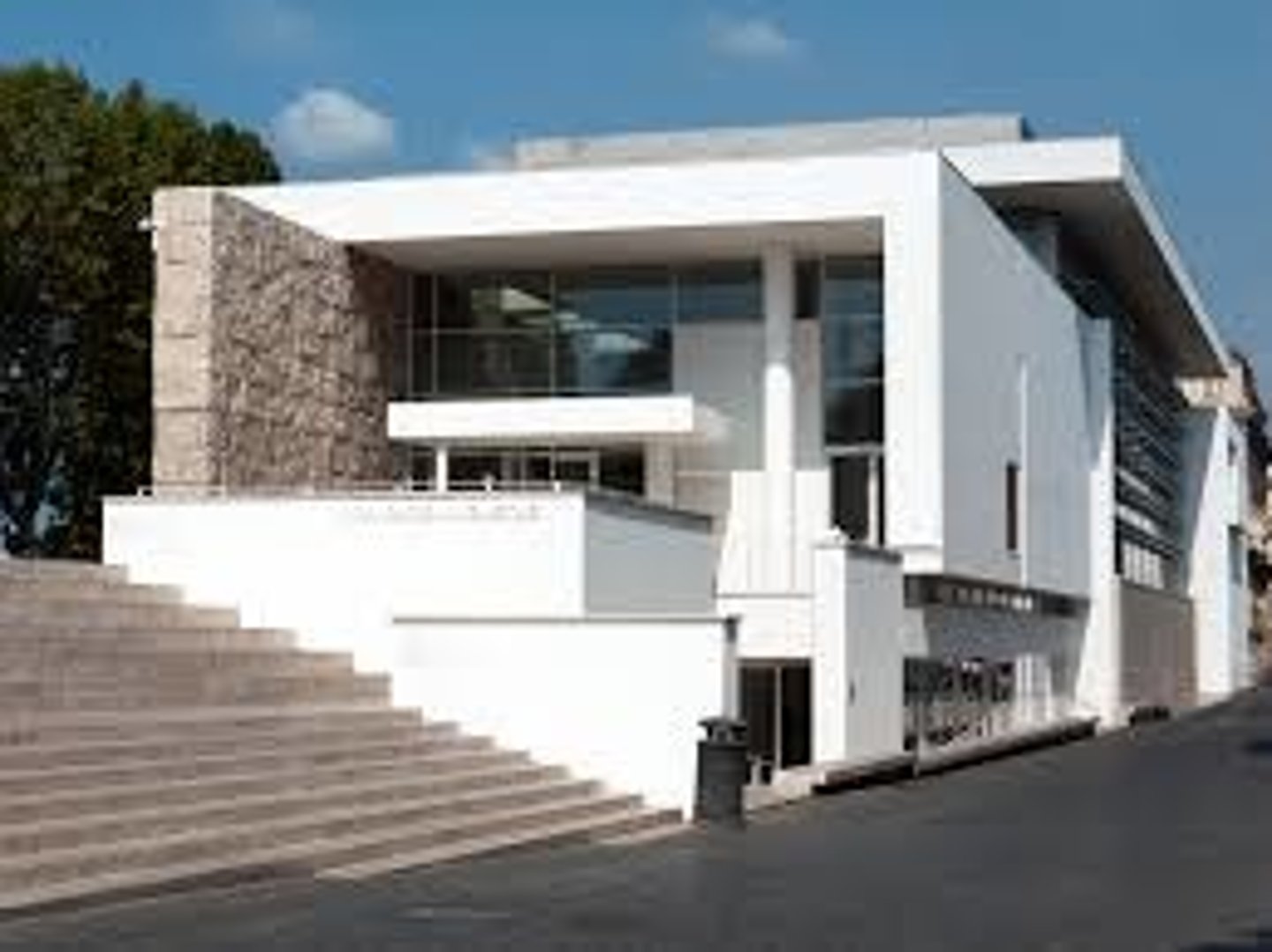
Disabitato/abitato
depopulated eastern portion of Rome in the Middle Ages that became more agricultural/inhabited portions of the city
Casatorre
tower house, built for aristocracy particularly after the twelfth century (plural: casatorri)
Passatto di Borgo
the elevated walkway through the Borgo neighborhood from the Vatican palaces to the Castel Sant'Angelo fortress/apartments
Humanists
Those trained in multiple human-centered disciplines: history, science, philosophy, art, and poetry, through ancient Greek and Latin sources (preserved in the Middle Ages in the Islamic world, medieval Latin copies, etc.)
All'antica
in the manner of the ancients, details from Greco-Roman culture
Janiculum Hill
Linear perspective
type of perspective used by artists in which the relative size, shape, and position of objects are determined by drawn or imagined lines converging at a point on the horizon
Monticuli
Emblem of Pope Sixtus, showing three small hills; used on monuments to mark his works throughout the city
Protestant Reformation
Started by Martin Luther in 1517 in Germany with the 95 theses against the church. Mainly focused on their indulgences and greed over their supposed mission of spreading religion.
Counter-Reformation
the reaction of the Roman Catholic Church to the Reformation reaffirming the veneration of saints and the authority of the Pope (to which Protestants objected). Often involved influencing Catholic kings to fight against Protestant kings.
Enfilade
A series of rooms formally aligned in a row, typically requiring one to enter one before going to the next.
Trompe l'oeil
"tricking the eye," an illusionistic work, painting, etc.
Forced Perspective
Technique which employs optical illision to make an object appear farther away, closer, larger, or smaller than it actually is
Baldaccino
A decorative canopy typically placed over a throne or altar of importance in an interior. Most famous is the St. Peter's Baldachin, which is over the main altar of St. Peter's Basilica
Grand tour
A social movement where young artists and architects would travel to Rome and other cities of importance to witness and study historical projects.
Iconographic plan
a ground plan, preserving the correct dimensions and relative proportions of the horizontal elements of what is shown (as opposed to a perspective or bird's-eye view, which has diminution and distorts relationships
Veduta
(view) detailed views (drawings, etchings, etc.) of landscapes, monuments, or other noteworthy views
Risorgimento
"nationalist resurgence" as the inification of Italy is known, from 1859-1879. Italy was unified under the king of Sardinia (the island and northern Italy), under Vittorio Emanuele II
Vittorio Emanuele II
Became king of the first unified Italy since the Roman Empire in 1860
Master plans
a framework for urban planning, image, and specific buildings in a city
Lungotevere
Twenty-meter wide boulevards alongside the Tiber
Baracca
informal settlement/housing for working people who came to Rome with industrialization
Beaux Arts
Arts and architecture style common in Europe during the mid to late 1800s. Heavy use of classical elements, strong axes, and massive scales.
Romanita/Italianita
The revival of Roman and Italian culture under Mussolini
Borgate
semi-urban neighborhoods built under the fascist regime
Case rapidissime
quick and cheaply built houses made by the workers themselves
"Third Rome"
A term used by various social and political powers to claim their heritage and inheritance of Roman influence and power. Most likely refers to Mussolini.
Duce
An Italian term meaning leader, but most famously adopted by Mussolini, who went by Il Duce.